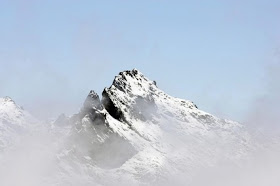 Evidence for abrupt climate change is readily found in ice cores taken from Greenland and Antarctica. One of the best known examples of such an event is the Younger Dryas cooling of about 12,000 years ago, named after the arctic wildflower found in northern European sediments. This event began and ended rather abruptly, and for its entire 1000 year duration the North Atlantic region was about 5°C colder. Could something like this happen again? It sure could, and because the changes can happen all within one decade—we might not even see it coming.
Evidence for abrupt climate change is readily found in ice cores taken from Greenland and Antarctica. One of the best known examples of such an event is the Younger Dryas cooling of about 12,000 years ago, named after the arctic wildflower found in northern European sediments. This event began and ended rather abruptly, and for its entire 1000 year duration the North Atlantic region was about 5°C colder. Could something like this happen again? It sure could, and because the changes can happen all within one decade—we might not even see it coming.The Younger Dryas occurred at a time when orbital forcing should have continued to drive climate to the present warm state. The unexplained phenomenon has been the topic of much intense scientific debate, as well as other millennial scale events.
Now an 11-year low in Sunspot activity has raised fears among a small number of scientists that rather than getting warmer, the Earth could possibly be about to return to another cooling period. The idea is especially intriguing considering that most of the world is in preparation for global warming. Could we be preparing for the wrong scenario?
A sunspot is a region on the Sun that is cooler than the rest and therefore appears darker. One theory is that a strong solar magnetic field, which causes plenty of sunspot activity, protects the earth from cosmic rays, but that when the field is weak - during low sunspot activity - the rays can penetrate into the lower atmosphere and cloud cover increases, which in turn leads to a cooler surface.
Geophysicist Phil Chapman, the first Australian to become an astronaut with NASA, notes that pictures from the US Solar and Heliospheric Observatory show that there are currently no spots on the sun. He believes this is the reason why the world cooled rapidly between January last year and January this year, by about 0.7C.
"This is the fastest temperature change in the instrumental record, and it puts us back to where we were in 1930," Dr Chapman wrote in The Australian. "If the temperature does not soon recover, we will have to conclude that global warming is over." (Source: Daily Galaxy)